Bringing Innovation to High School
Do high schools today provide opportunities for students to innovate? This was the question that 3 high school science teachers in our “Creating Innovators” grant project kept asking themselves as they were reading Tony Wagner’s book Creating Innovators during our project’s book study. It seemed apparent that very few of the innovators described in the book attributed any of their innovative nature to teachers or mentors in their high school. Upon further reflection, these teachers, Kristi Follett, Heather Wendt and Niki Juhl realized that providing opportunities for innovation while still meeting content requirements and within the current school structure and time constraints is next to impossible, so they set out to do something about it.
In researching examples of innovation in the Colorado Springs area, they learned about a unique program at the University of Colorado, Colorado Springs: the world’s only Bachelor of Innovation Degree Program. This program offers Bachelor of Innovation degrees in six different majors: Business, Computer Science, Computer Security, Electrical Engineering, Game Design and Development and Inclusive Early Childhood Education. No matter which area students major in, all students in the program must complete 27 credit hours of the Innovation Core courses, to include courses in entrepreneurship, the innovative process, business and intellectual property law, technical writing, proposals & presentations, and innovation teams, to include analyze, report, research, execute, design, lead, and strategy. Students in this program work with real clients, write grants, design programs, and solve real-world problems.
Creativity is thinking up new things. Innovation is doing new things. – Theodore Levitt
Kristi, Heather & Niki reached out to the BI program via the visionary founder, Dr. Terry Boult, and Co-Director of of Strategic Alliances, Dr. Colleen Stiles. After multiple conversations, a true collaborative partnership emerged. One of the UCCS BI Innovative Teams classes adopted these 3 science teachers as a client. The problem they were trying to solve? How to bring 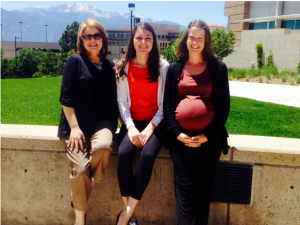 innovative learning opportunities to high school science classes. The result? The UCCS students worked with Kristi, Heather and Niki to design an elective science course, I.D.E.A.S. – “Innovative Design in Educational Alliances for STEM.” The program is rooted in standards for Science, English, and Math, but also addresses all parts of innovation: funding, teams, process, and protection of ideas – and 21st century skills. Essentially, high school students will be mentored by UCCS BI students and participate on innovative teams applying science knowledge to solve real world problems for clients. The BI students are currently seeking funding for the program, and are prepared to assist when it comes time to request the new course before the school board. These BI students are highly motivated to make this happen, being recent high school graduates themselves. They recognize the need to create more engaging and authentic learning experiences for high school students.
innovative learning opportunities to high school science classes. The result? The UCCS students worked with Kristi, Heather and Niki to design an elective science course, I.D.E.A.S. – “Innovative Design in Educational Alliances for STEM.” The program is rooted in standards for Science, English, and Math, but also addresses all parts of innovation: funding, teams, process, and protection of ideas – and 21st century skills. Essentially, high school students will be mentored by UCCS BI students and participate on innovative teams applying science knowledge to solve real world problems for clients. The BI students are currently seeking funding for the program, and are prepared to assist when it comes time to request the new course before the school board. These BI students are highly motivated to make this happen, being recent high school graduates themselves. They recognize the need to create more engaging and authentic learning experiences for high school students.
To read more about Kristi, Heather, and Niki’s innovative adventures, visit their blog, Innovation Adventures, and follow them on Twitter:
Reaching “Technology-Reluctant” Teachers
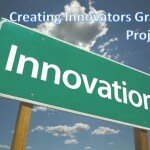 How do we reach teachers who would probably never volunteer to attend an educational technology professional development workshop, let alone a full-year grant project? During the 2013-14 school year, our IT-Educational Services department wanted to use some internal grant funding to try to reach out to some of these teachers in a meaningful way; to start them on the road toward innovative and transformative learning for their students. We decided on piloting a peer-mentoring program, where we would select some of our innovative/early adopting teachers from 8 different schools to mentor 2-3 “technology-reluctant” teachers in their schools. Here are the goals we drafted:
How do we reach teachers who would probably never volunteer to attend an educational technology professional development workshop, let alone a full-year grant project? During the 2013-14 school year, our IT-Educational Services department wanted to use some internal grant funding to try to reach out to some of these teachers in a meaningful way; to start them on the road toward innovative and transformative learning for their students. We decided on piloting a peer-mentoring program, where we would select some of our innovative/early adopting teachers from 8 different schools to mentor 2-3 “technology-reluctant” teachers in their schools. Here are the goals we drafted:

Designing the Professional Development Plan
We use Understanding by Design to plan out our professional development workshops and programs, to help us assure that we identify meaningful learning goals for our teachers, activities were aligned with these goals, and that measures of success were in place. For this project, our overall transfer goal was this:

Before meeting with the whole group of mentors & mentees, we had one workshop just for the mentors, to give them tips and  information on strategies for instructional coaching, using many of the wonderful resources from ISTE’s Coaches PLN, including the ISTE Standards for Coaches. Both mentors & mentees participated in an online learning community to do a book study of Tony Wagner’s wonderful book, Creating Innovators – from which we came up with the title of our grant project. Throughout the year, we offered four face-to-face workshops to the whole group. At each workshop, we modeled active, hands-on learning, sharing strategies and tools that they could use in their classrooms. We used the University of South Florida’s Technology Integration Matrix for teachers to self-assess where they were in using technology and the videos to help them capture a vision of where they’d like to be. We set up “think tanks” for them to benefit from small group brainstorming on how to improve a lesson or unit through the use of technology tools and innovative learning strategies. We introduced them to the Stanford dSchool Design Thinking process. Additionally, we provided subs so they could visit each other’s classrooms, and we visited two innovative schools in the Denver Metro area – Adams 12’s STEM program at Northglenn High School and the STEM Launch K-8 school, also in Adams 12. In addition to all of this, the mentors worked 1:1 with their mentees throughout the year, offering just-in-time teaching of tools and strategies, advice, and encouragement. All of these activities were designed with the end in mind: building the mentee teachers’ understanding, skills and confidence so that they would be willing to try some of these innovative practices for teaching and learning with their own students.
information on strategies for instructional coaching, using many of the wonderful resources from ISTE’s Coaches PLN, including the ISTE Standards for Coaches. Both mentors & mentees participated in an online learning community to do a book study of Tony Wagner’s wonderful book, Creating Innovators – from which we came up with the title of our grant project. Throughout the year, we offered four face-to-face workshops to the whole group. At each workshop, we modeled active, hands-on learning, sharing strategies and tools that they could use in their classrooms. We used the University of South Florida’s Technology Integration Matrix for teachers to self-assess where they were in using technology and the videos to help them capture a vision of where they’d like to be. We set up “think tanks” for them to benefit from small group brainstorming on how to improve a lesson or unit through the use of technology tools and innovative learning strategies. We introduced them to the Stanford dSchool Design Thinking process. Additionally, we provided subs so they could visit each other’s classrooms, and we visited two innovative schools in the Denver Metro area – Adams 12’s STEM program at Northglenn High School and the STEM Launch K-8 school, also in Adams 12. In addition to all of this, the mentors worked 1:1 with their mentees throughout the year, offering just-in-time teaching of tools and strategies, advice, and encouragement. All of these activities were designed with the end in mind: building the mentee teachers’ understanding, skills and confidence so that they would be willing to try some of these innovative practices for teaching and learning with their own students.
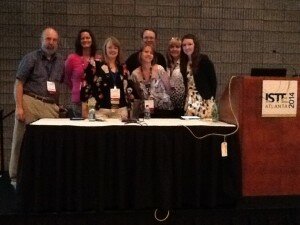
Academy District 20’s Creating Innovators Mentor Team: Phil McIntosh, Toni Olivieri-Barton, Nancy White, Autumn Cave-Crosby, Doug Hinkle, Sandy Vuletich, and Kristi Follett. Not pictured: Leni Schlieper, Alicia Needham.
I am happy to report that we were very successful in accomplishing our goal. It was interesting that each team of teachers seemed to connect with one particular strategy from our professional development plan, and all seemed to branch out in different directions, to best meet the needs of the learners in their schools. Our mentor teachers presented as a panel at ISTE to an audience of over 200 people, sharing their challenges and successes in the Creating Innovators Project.
I’d like to share with you the impact on one of our elementary teachers. The video below was produced by Justin Crosby and mentor teacher, Autumn Crosby, and features Autumn’s mentee, Cheryl Hammarquist, kindergarten Teacher, Michelle Sylvestri, kindergarten paraprofessional, and Dr. Kathy Pickering, assistant principal.
In my next blot post, I will share the story of our high school mentor/mentee team, who are taking innovation to a whole new level!
Leadership Day 2014: A Call to Innovate

A comment made during this week’s #edchat, for which the topic was “What are your 2 specific top priorities that you would put in place today for education reform?” has inspired this writing for #leadershipday2014. Justin Buckner (), a 4th grade teacher from San Antonio and author of the Everyday Project Based Learning blog tweeted:
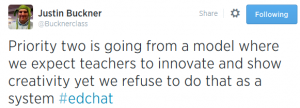
I wonder how many schools and districts have some version of the word “innovate” in their mission statements. I also wonder how many of those schools and districts are prepared to back their teachers who truly want to innovate, within a system that is becoming more rigid and inflexible every year.
Innovation, as defined by Merriam-Webster Dictionary:
A new idea, device or method, or is the act or process of introducing a new idea, device or method.
This is not research-based best practice if it is “new.” Because of this, there is a certain element of risk involved. Will it work for one student? For some? For all? Teachers need to know that their educational leaders “have their backs” as they try to implement new tools and strategies in pursuit of helping each individual student to maximize his/her learning.
There are so many incredible technology tools available –and more are introduced every day. These tools open up a whole new world and the possibility of truly transforming learning for our  students. “Best Practice” needs to give way to “NEXT practice,” as students are learning through technology in ways that were never possible when those “best practices” were identified years ago.
students. “Best Practice” needs to give way to “NEXT practice,” as students are learning through technology in ways that were never possible when those “best practices” were identified years ago.
Dr. John Sullivan describes it this way:
Best practices only allow you to do what you are currently doing a little better, while next practices increase your organization’s capability to do things that it could never have done before.
Educational leaders, empower your teachers to innovate, so that they can help students in ways they never could have done before.
“Technology” Initiative or “Learning” Initiative?
 There seem to be an increasing number of “1:1″ initiatives, “mobile learning” initiatives, “BYOD” initiatives, and “digital learning” initiatives throughout the country, perhaps in response to Obama’s call for digital textbooks to be in every student’s hands within 5 years (from 2012) or in response to online testing requirements. Perhaps, though, the purpose of these initiatives is something more.
There seem to be an increasing number of “1:1″ initiatives, “mobile learning” initiatives, “BYOD” initiatives, and “digital learning” initiatives throughout the country, perhaps in response to Obama’s call for digital textbooks to be in every student’s hands within 5 years (from 2012) or in response to online testing requirements. Perhaps, though, the purpose of these initiatives is something more.
Here is what I am wondering. If we call an initiative by the name of the strategy, rather than the results we hope to see, will we actually achieve the end goal? Have we even identified what the end goal is? Isn’t the end goal about more than access to technology?

Falcon Virtual Academy, Colorado Springs
I had a moment of clarity yesterday, brought about by tuning in to the first of Broward County Public Schools Webinar series (through the Center for Digital Education) on their “Personalized Learning” initiative. The first webinar of the series was about planning. As I listened, I thought how odd it was that the planning they were really talking about had everything to do with getting a digital device into the hands of every student. I thought I was listening to a webinar about a 1:1 initiative, and that perhaps I had tuned in to the wrong webinar.
Then it struck me. Personalized Learning is the end goal. (-or should be.) A major strategy to accomplish this is getting a personal digital device into the hands of every student, so of course this is a huge piece of the planning.
 What a simple concept. By labeling the initiative what it is, I believe there is a much better chance of achieving it. Why? Because the measures of success will be to determine the level of personalized learning that is accomplished, or perhaps even student achievement, growth, or skill acquisition. If the initiative is just about getting technology into kids hands, then the measures of success will likely look quite different. They will be more quantitative in nature, and probably not as focused on the learning–or the student. Re-labeling the initiative might even be the shift needed to get all of the right people to the planning table – not just the technology team, but leaders in curriculum, instruction, and assessment as well.
What a simple concept. By labeling the initiative what it is, I believe there is a much better chance of achieving it. Why? Because the measures of success will be to determine the level of personalized learning that is accomplished, or perhaps even student achievement, growth, or skill acquisition. If the initiative is just about getting technology into kids hands, then the measures of success will likely look quite different. They will be more quantitative in nature, and probably not as focused on the learning–or the student. Re-labeling the initiative might even be the shift needed to get all of the right people to the planning table – not just the technology team, but leaders in curriculum, instruction, and assessment as well.
What initiative do you have in your school or district? What do you call it? What are the measures of success? Are they in alignment? Would it help to call it what it is?
Global Competency or Global Understanding? Reflections following an Extraordinary Week in China
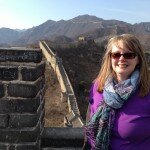
Standing on the Great Wall of China
I was ecstatic when I found out recently that I had been selected by EF Tours for a full scholarship to travel to China last month for a Global Student Leadership Summit! This was an opportunity to see student global collaboration and problem solving in action, and to brainstorm and collaborate with other educators from Colorado and around the U.S. to start building a plan for students in my district to address global competency in a comprehensive way. Ever since my first travel experiences outside of the U.S. many, many years ago– to Mexico with my high school choir, and Europe with my college choir –I have understood that my thinking, my understanding, and my world view were different from those of my peers and my family, I believe, as a result of this travel. Sure, I had participated in the obligatory “cultural” experiences of my schooling – making crepes in French class, having an “international fair” with my Girl Scout troop, and even exchanged some letters with a French pen pal. None of that prepared me for actually being in another country, where not only many of the buildings, but the traditions date back hundreds and hundreds, if not thousands of years. This makes Mt. Vernon seem downright new – and brings an unbelievably new perspective to a person’s thinking in a way that is difficult to describe. Not to mention the perspective gained through real relationships formed. In both of these travel experiences of my youth, I was pushed way outside my comfort zone. Brief as they were, we were immersed in the culture, in my case, through the language, the music, the historical sites we visited, the food we ate, the personal stories shared by our excellent guides, and staying with host families at least part of the time. I was excited to see this impact on the students at the Summit.
It is this kind of experience, I believe, that leads to global understanding. People who travel abroad with an open mind can experience this. (Note –open mind required!) It goes beyond “global competency.” Don’t get me wrong – global competency is essential for our students’ future success – and certainly better than nothing, but there is a huge difference between knowing something –and really understanding something.

Winners of the Judge’s Choice Award: Innovation Village at #EFSummit
In China, in addition to the group of educators I traveled with, about 400 American and Chinese high school students were brought together for the Global Student Leadership Summit to use the Stanford dSchool Design Thinking process to design and present solutions to global issues. This was true global collaboration. Students came together to address a topic they were passionate about, and in the case of the Chinese students, in a language that was not their own. They had just two days to accomplish this! (The rest of the week, we spent touring in and experiencing the culture of Shanghai and Beijing.) During the Summit, students were inspired by NPR’s Planet Money hosts, Adam Davidson and Alex Blumberg, and by former ambassador to China, Jon Huntsman Jr. Click on the image below to see some highlights of the Summit experience:
Here is what I am wondering: Can we duplicate the intensity of an immersion experience through technology – to go beyond global competency to achieve this kind of global understanding? I believe whenever possible, we need to make travel experiences like this available to our students, but when travel is not possible, technology can and must help bridge the gap between global competency and true global understanding. Veronica Mansilla and Anthony Jackson state in their book, Educating for Global Competence: Preparing our Youth to Engage the World. Published by the Council of Chief State School Officers and The Asia Society:
Videoconferencing, social networking, and other communication technologies now allow students unprecedented opportunities to investigate issues of global significance with students around the world—much the way working professionals now operate in global teams.
The issue, though, is how in-depth teachers design these learning experiences to be. A simple cultural exchange about weather, holiday traditions, music, and foods, while students sit surrounded by their own comforts of home, might be a good starting point for young students, but for older students, to really grow their global understanding, we need to design opportunities for actual cross-cultural collaborative problem solving. It is through this kind of experience that we will develop students as future leaders.
I encourage you to investigate EF Tours for future Student Leadership Summits, service learning, exchange programs, and travel opportunities for students and educators – I am quite impressed with the programs they offer. Also check out Flat Connections for opportunities for technology-enabled global, collaborative problem solving. On my Global Collaboration Wiki Resource page, I have listed several other links to help students make connections through service learning and problem solving globally.
School Libraries and Learner Agency
I recently had the opportunity to speak at the Jefferson County School District Tech Share Fair on the topic of school libraries and learner agency. This is a topic near and dear to me, after working in school libraries for many years, I understand that libraries are the heart of learner agency in a school. Here are the highlights from my presentation, and the slides are embedded below. I’d like to thank Buffy Hamilton, “Fancy Jantzi,” and the Alaska Library Association who shared so many wonderful pictures of learner agency in action in libraries under a Creative Commons license on Flickr.
————————————————————————————————————
I want to share with you today two documents you may not be familiar with, but hopefully, you will start to see that these documents can serve as a road map to the Learner Agency you are seeking for your students.
The first of these is the AASL Standards for the 21st Century Learner.
In 2007, the American Association for School Librarians came out with a new mission statement and standards. These standards were not meant to stand alone or to be carried out just by the teacher-librarian in a school, but need to be owned by everyone in a school setting, through collaboration with the teacher-librarian.
The mission statement embodies the very definition of Learner Agency. The library PROGRAM, (which reaches into every corner of the school), exists to EMPOWER students to be
- Critical Thinkers
- ENTHUSIASTIC readers
- SKILLFUL researchers and
- ETHICAL users of information
The standards document contains just 4 active standards, that can be summed up with these 4 verbs:
21st Century Learners can:
- Think
- Create
- Share
- Grow
To accomplish each of these, they must access or use
- Skills
- Dispositions in Action
- Responsibilities
- Self-Assessment Strategies
Although we did not label it as such at the time, I believe now that this document was foundational in defining a learning environment where Learner Agency can flourish.
In the Spring of 2008 – a group of teacher-librarians, technology teachers, classroom teachers from every level, administrators, and CDE personnel were convened in Colorado to dig deeply into the new standards. The group unanimously agreed to adopt the AASL Standards for the 21st Century Learner.
The next steps would be to organize into subcommittees to create an action plan to carry out the new standards.
A vision committee was the first to form. Here is what they came to realize:
Too frequently in schools, the focus is on content rather than skills. Assignments don’t require students to think at higher levels. Students are not given choice in how they learn, or how they show their learning. Library schedules are fixed and student time for independent exploration and self-directed learning is limited.
It occurred to the group that to give students an opportunity to practice and master these new standards, to truly empower our students, something within this learning environment needed to change.
It had become clear that something was missing in all of the content standards, educational plans, and accountability processes in education to assure students could really develop into 21st century learners.
The vision subcommittee pondered over what they could communicate or create to help Colorado educators realize that something needed to change so students truly would be able to develop these 21st century skills.
The group identified this simple fact: LEARNERS HAVE RIGHTS!
So much of a student’s school experience is contained within boundaries of time and place. Students stop their learning at the end of a unit or class period. They don’t think of themselves as learners outside the classroom walls. Yet, they are learning all of the time.
We needed a way to communicate not stop—but GO!
Here is where the group started.
A vision statement was drafted:
We ALL exist to inquire, create new knowledge, share knowledge and participate productively, and to pursue personal and organizational growth.
The new standards speak of responsibilities –but what about RIGHTS?
The Vision Sub-Committee members were: Jody Gehrig, Gene Hainer, Jody Howard, Becky Johnson, Stevan Kalmon, and Wendy Lee.
Jody Gehrig lead this effort. Sadly, she lost her battle with cancer in February, 2010, but her passion for empowering students to learn lives on in this work.
From Jody Gehrig:
These are learners who have a right to learn. if we as teachers want to be effective with our learners, WE must take the responsibility to construct inquiry learning experiences for them that allow them to blossom as learners. These experiences go much farther than just illustrating the right they value most. We as teachers and learning community leaders must guide their work so they can develop into 21st century learners.
At this point, their work was passed on to a new group, The Learner’s Bill of Rights subcommittee, also chaired by Jody.
After an intense brainstorming session, followed by a great deal of wordsmithing and refinement, the Learner’s Bill of Rights was born. Let’s take a closer look – and see if you can see Learner Agency come alive in these simple statements.
The Learner has the Right to… Question and be Curious.
Students come to the library every single day with questions. What book should I read? How can I find information on this or that? Why do some nations not have daylight savings time? Why is the sky blue? And so on, and on, and on!
In classrooms, I think this is quite different. Content has to be covered. Standards met. Schedules adhered to.
During the last 3 years, I had the opportunity to observe in hundreds of classrooms in my district, specifically looking for examples of 21st century learning in action.
Sadly, I can probably count on one hand the number of times a student asked a question, other than just to clarify what needed to be done for an assignment.
Yet teachers find ways – such as through question walls using post-it notes – for students to ask their questions, which later could be addressed in class, or students might be given time in the library to seek answers.
We must find ways to keep student questioning and curiosity alive inside the walls of our school – where support systems exist to help students in their pursuit of answers.
The learner has the right to… Have personal ideas.
A friend once suggested that this might better be stated as “EXPRESS” personal ideas. This is a great idea, too – but as I recall, the reason our committee settled on HAVE personal ideas is that we believed that somewhere along the way in formal educational settings, students forget that their ideas matter – and it is really OK to have personal ideas and opinions! Once they get in touch with those personal ideas –then, yes! Let’s help them express them!
The learner has the right to… Choose how To learn and share understanding
Choice. Where, oh where, does this fit in a standards-based, scope-and-sequence world? Creative teachers find a way.
And—Thank goodness for school libraries!
Libraries have always been about giving students choice in what they read and how they learn. Multiple genres, points of view, fiction and non-fiction, print or digital. Today’s libraries add multiple ways to show understanding, to showcase the student voice, create in makerspaces, and share with a global audience.
The learner has the right to… Plan and participate in learning at an appropriate level.
This IS learner agency.
Students set learning goals, following their own learning passions. They go about meeting those goals – and have the appropriate level resources available to help them meet those goals.
School libraries are essential to this learner right.
The learner has the right to….Grapple with challenging ideas or concepts.
In school libraries, students can find the resources and help they need to go beyond class requirements – or simply explore a topic they are passionate about. In libraries, students explore topics in-depth, and strive to make sense of ideas and concepts.
The learner has the right to…Access information and resources needed.
This is a primary mission for school libraries.
If students decide on the topic, ask the questions, decide on the materials to access and the procedures to follow, they are curating and meeting a personal information need, analyzing and drawing conclusions . The more students have control over their inquiries, and it is linked to their own personal questions, the higher the students’ agency.
The learner has the right to…Participate in and contribute to a learning network.
In libraries, this might be face-to-face networks, such as book clubs, or the teacher-librarian might make arrangements to share with a group of students on the other side of the world, through technology such as Skype, such as the case with this young man who is sharing his poem with a group of students in Africa.
The learner has the right to…Think critically, solve problems and make decisions.
If we want our students to think critically, we have to design learning that allows room for students to think critically. Not lecture. Not listening to videos. Students need to do hands-on problem solving. And, they have to care about the outcome. If you want them to dig deep and think hard, then add a good dose of real-world relevance to your learning scenario.
The learner has the right to…Make mistakes and learn from them.
Have you ever wondered exactly what it is about gaming that attracts us?
A student made this comment, “In the classroom, I feel like I’m being forced to learn. When I’m gaming, I feel like I’m using ‘it’. I don’t feel myself being forced. “
Gaming is not just a safe environment for students to make mistakes and learn from them –its fun! Many of our libraries are recognizing the importance of this, and setting up gaming spaces for learners. Here, students are empowered to learn – on their terms.
If Learner agency = empowering students
And Agency specifically is the power to make choices – this is what happens in school libraries every day!
Teacher-librarians create the conditions and the environment where students are empowered to solve their own problems and find answers to their questions. Students collaborate, network, share, and grow – not just to meet the requirements of a class, but also following their own needs for understanding.
I remember
- Carolyn coming into the library trying to find everything she could about the state of Virginia. She was going to move there with her family at the end of the school year.
- I remember Janelle, whose mother with diagnosed with breast cancer. She had so many questions and concerns. She didn’t understand what was happening to her mother, why the treatment made her so sick. She struggled with finding information online, and when she did, it was too hard to understand. In the school library, she was able to find books written at a level she could understand, and get the support she needed in this difficult time.
- I remember Robert, who learned about Japanese internment camps during World War II in class, and was surprised to learn from his father that he had a relative who was sent to one. The textbook information was limited, and so he sought help in the library to find the information he needed, to learn in a deeper way since he discovered this personal connection.
- And then there was Jason, who was fiercely proud of his air force father – and just wanted to learn everything that there was to learn about the air force, jets, and flying. He sought to understand why his Dad was deployed in Iraq, and sort through the multiple mixed messages in the newspapers and online about why this was right, and why it was wrong.
There are a million other stories just like these of how the school library has helped children with their personal information needs.
Nick Rate, principal at Kumeroa-Hopelands School in New Zealand described learner agency with these words: Enabling, empowering, self-monitoring, goals, feedback, meta-cognition, active, responsive, self-directed and meaningful.
- In school libraries, students are enabled.
- In school libraries, students are empowered.
- In school libraries, students practice self-monitoring
- In school libraries, students set personal learning goals.
- In school libraries, students receive feedback.
- In school libraries, students practice meta-cognition.
- In school libraries, students are active!
- In school libraries, students are responsive.
- In school libraries, students practice self-direction.
- In school libraries, student find meaning.
Libraries are essential to Learner Agency.
What If? The Airbnb and Lyft of Education
Item #5 in Betty Ray’s article on Edutopia, “5 Awesome Innovations in 2014” sent my mind wandering yesterday, as ideas converged and my imagination soared.
 Item # 5 in Betty’s list of innovations is about Airbnb and Lyft – innovations of the travel and transportation industries, that make use of social media and technology to help people find charming and inexpensive places to stay when they travel, and inexpensive and reliable rides when and where they need them. Betty posed the question, “Is there something in this model for educators?”
Item # 5 in Betty’s list of innovations is about Airbnb and Lyft – innovations of the travel and transportation industries, that make use of social media and technology to help people find charming and inexpensive places to stay when they travel, and inexpensive and reliable rides when and where they need them. Betty posed the question, “Is there something in this model for educators?”
I thought immediately of an idea I’ve been tossing around in my mind for a while now –a way to build a database of community mentors for our students that would allow them to learn about careers that interest them and form relationships with professional people that might help motivate them to stay in school. My dream would be to contact alumni from our school district to start this ball rolling. Colleges and universities have alumni associations –why not K-12 school districts? Indeed, my school district in St. Louis – Parkway School District – already has a large and successful alumni association. Their primary purpose seems to be to collect funds for schools and scholarships, but what if we expand on that? What if we give choice to our alumni to give time, talent, and/or money? How many different problems could this solve for schools and districts?
Now I am beginning to think that this idea is good, but not big enough. What if we used the same kind of technology and social media connections that Airbnb and Lyft use to build a national – or even international database of potential mentors for students? What if there’s an app for that?
Now my idea is converging with thoughts I am still tossing around from a fascinating discussion with Monika Hardy, who stretched my thinking on how to redefine public education. I’m also thinking about the efforts of Daniel Bassill, and his tutor-mentor connection in Chicago. What if we combine these ideas, using technology and social media in a big way? Imagine this scenario:
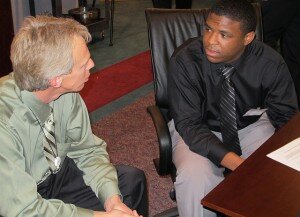
Image CC licensed on Flickr by USACE HQ
Company X is sold on the value of helping build the skills and knowledge of high school students who can learn their business and contribute ideas and solutions while still in school through the “21st Century Apprenticeship Program.” Company X will offer incentives to employees who agree to mentor high school students in X community. John Smith decides to give this a try –his youngest son has just left for college, thanks to the great mentorship he received in the 21st Century Apprenticeship program. His son developed a drive and passion to complete his schooling in a way John didn’t think was possible. John wants to be able to “give back” and help another young person. He accesses the website to compete an application form. Company X will pay for the application fee and background check required. John fills in the form, indicating the high school and universities he attended, the areas he is certificated in, and his personal strengths and interests. He writes a friendly letter of introduction, which is stored along with the data he has entered, and his photo supplied by company X, ready to be sent when the computer algorithm finds a match for him. Once completed, he downloads the app to his phone, which will alert him when a match is made.
Mitchell is having a hard time focusing in school. He knows he needs to do well, and he should be beginning his college search, yet he just has not discovered a career area he is passionate about, let alone any reason to really do well on next week’s Chemistry exam. The stress is really getting to him, between his mom nagging him to study more, his “perfect” brother, who was offered every scholarship under the sun and is now top of his class at his university, and his friends who keep telling him to “blow it off” and go shoot some hoops down at the park. Then, his counselor, Ms. Brown, texted a link out to all the seniors through Naviance. It was about that 21st Century Apprenticeship Program – an app he could download that would allow him to be paired up with a community business mentor based on his interests and strengths. It didn’t cost anything, and it would give him an inside look at some different careers and the world of work. Come to think of it, his brother had this app – he used to spend more time on that than Facebook! He decided to give it a try.
So –what do you think? How will this story end? Will Mitchell go on to be successful? Will Company X be able to tap into new talent and insight, with a new employee fully trained and ready to contribute and innovate upon college graduation? Can we develop this tool?
What if?
Tag – You’re It! Blog Meme
Many thanks to Ben Wilkoff for tagging me in a blog meme –what a great way to reflect as 2013 comes to a close! Ben was tagged on Jeremy Inscho’s blog, who was inspired by Dean Shareski’s post. I decided to follow Ben’s lead in tagging some Colorado bloggers – many from my school district. I hope you’ll play along. Here’s my homework:
11 Random Facts about Me
- I started my education career as a music teacher, and my first job was actually at an early childhood center on Bolling AFB in Washington DC.
- During the height of the aerobic craze of the 80s – I taught aerobics in Hampton, VA and once was in a mall show with Richard Simmons!
- I have been participating in social media since the early 90s– a favorite hobby is planning vacations for my family and I used electronic bulletin boards and cruise critic travel boards via Prodigy and AOL back then to do this!
- I have played guitar since the 5th grade, and have sung in many weddings over the years.
- I lived in Germany with my Air Force husband for 3 years, and visited 12 different countries during that time, in addition to Volksmarching in multiple German towns every weekend.
- I grew up in the St. Louis area.
- In my sophomore year, I became president of our school’s chapter of Future Teachers of America.
- When I was in high school, my first job was at Six Flags Over Mid-America (St. Louis).
- I’m left-handed.
- I am very proud of my 2 daughters – one in Seattle who is a former Peace Corps volunteer (Guinea) & recruiter, now working for the Department of Immigration, and one who is an Air Traffic Controller in the Denver area, after serving 6 years in the Air Force.
- I just celebrated my 30 year anniversary with my husband – the love of my life, and my best friend – who received his PhD last week in Engineering- Security.
11 Questions from Ben:
- Where do you go when you want to think? It’s not so much a place as a time. My favorite thinking time is actually just as I am waking up in the morning. (Often times, this happens earlier than I’d like!)
- What is your writing ritual? I have been known to get up out of bed and write down some ideas –usually in the form of lists. I tend to do my best writing early in the morning while these ideas are still percolating. But leisurely weekends are nice too – I read some of the gems shared by my PLN, follow links, add to my curated topics on Scoop-It, and realize I have some new insights to share as a result of this process.
- What is the best thing that you can cook? Lasagna! A close second, in the dessert category, is Chicago-style chocolate chip cheesecake.
- When did you know you wanted to be an educator? Since about the 9th grade. I was inspired by my high school choir teachers, Miss G. & Mickey and also from a “cadet teaching” experience.
- How do you learn best? Through personal research, reading, reflecting, creating my own visuals—essentially curating. If we are talking about learning a new skill, though—I Iearn by doing, as I believe all people do. Practice, practice, practice!
-
What is the most amazing thing you ever saw a kid do (your child or someone else’s)? What comes to mind –the first time your children offer to pick up the bill when the family goes out to eat—you know they’ve “made” it.

- What is the one thing you want to do most before you shuffle off this mortal coil? I have always felt truly blessed to have such a wonderful family, the opportunity to travel, meet interesting people, have a job that I love to do and the ability to continuously learn and grow. I really can’t think of anything that is a “must do” at this point.
-
What do you think of ? Since I am traveling to China in March, the language translation capabilities are the most intriguing to me at the moment. Otherwise, I haven’t really given them much thought. I tend to be “on the fence” with new technologies until I see a way that they can be transformative – rather than just another fad. Time will tell, I guess.

Stained Glass by Margaret Hansen
-
What is the best piece of art you ever purchased? A good friend, Maggie Hansen, is a stained-glass artist. I like to think of
my living room as a “Maggie Hansen art gallery” –with a 3-panel Tuscany stained-glass scene, and a beautifu mountain scene.
- What would the tagline for a movie about your life be? “Lifelong learner.”
- What do you do when there is a jar that you just can’t open? First I get one of those rubber jar-opening gizmos and see if that will do the trick. If not – I hand it over to my husband to open for me!
Now It’s Your Turn: Tag –You are IT!
- Susan Murray-Carrico: Paradigm Shift –
- Phil McIntosh: Mister McIntosh Says –
- April Gudenrath: The Blended English/Ethics Classroom –
- Matt Pacione: Matt’s Math –
- Ryan McClintock: The Collaboraider –
- Cathleen Nardi: Exploring Digital Culture –
- Zoe Midler: Not a Rocking Chair Librarian –
- Deanna Dykstra: Forthcoming –
- Matthew Woolums: The Village Green –
- Doug Hinkle: –This is a challenge to Doug to use this opportunity to start a blog – I know he has a lot to share!!
- ??? – Who in my PLN wants to take this challenge? I leave this slot open for you!
11 Questions for these Bloggers
- What is your favorite technology tool for personal use?
- What is your favorite technology tool for students?
- What is your favorite book?
- What is the “next big thing” for education?
- Who do you most admire?
- What topic/topics are you currently researching?
- What is a favorite place you have visited?
- What inspires you?
- Who was your most memorable teacher?
- Were you a good student?
- How do you learn best?
HERE’S HOW IT WORKS: When you are tagged…
- Acknowledge the nominating blogger.
- Share 11 random facts about yourself.
- Answer the 11 questions the nominating blogger has created for you.
- List 11 bloggers.
- Post 11 questions for the bloggers you nominate to answer, and let all the bloggers know they have been nominated. Don’t nominate a blogger who has nominated you.
Thoughts on Defining Innovation in Education
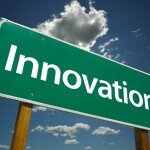
I’ve been doing some thinking about how to best define innovation in education. I’ve been reading a lot of mission statements lately for schools and districts and keep finding the word “innovative” used, yet little sign of practices in the objectives, tactics and goals to back this up. The tactics and action plan seem to be oriented towards producing test scores and the practices seem 20th century at best.
If Business Innovation is defined this way:
The process of translating an idea or invention into a good or service that creates value or for which customers will pay.
…does this definition for education innovation follow?
Implementation of a new design, process, idea, or learning environment that increases an individual student or group of students’ ability to learn, as evidenced by their ability to make meaning and transfer.
Then I started translating additional parts of the business innovation definition for education this way:
Business: Innovation involves deliberate application of information, imagination and initiative in deriving greater or different values from resources, and includes all processes by which new ideas are generated and converted into useful products.
Education:
Innovation involves deliberate application of information, imagination and initiative in deriving greater or different values from resources
This could be resources of time or people as well as money.
In business, innovation often results when ideas are applied by the company in order to further satisfy the needs and expectations of the customers.
In education, innovation often results when ideas are applied to satisfy the needs and expectations of the students.

CC Photo by Brad Flickinger. Available http://www.flickr.com/people/56155476@N08/
This is a powerful statement when you think about it –do we intentionally design and plan for the needs of the students? The individual student? How do we know what those needs are? Do we go beyond test scores and consider the whole child when determining those needs? Their learning style? Their 21st century skills? At what point do we address the individual student needs in the backwards planning process? There is an obvious connection to personalized learning here. Universal Design for Learning offers a framework that provides one possible approach.
I continued reading and translating the Business Dictionary.com article for education:
In education, innovation helps create new methods for collaboration, interdisciplinary learning, flexible time , and flexible learning environments. Innovations are divided into two broad categories:
- Evolutionary innovations) that are brought about by many incremental advances in technology or processes and
- Revolutionary innovations which are often disruptive and new.
 Innovation is synonymous with risk-taking and organizations that create revolutionary changes in services and learning environments take on the greatest risk.
Innovation is synonymous with risk-taking and organizations that create revolutionary changes in services and learning environments take on the greatest risk.
Given this definition, is your classroom, school, or district innovative?
« older entries newer entries »

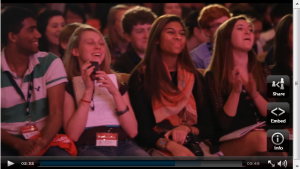

 Everything happens for a reason, right? Originally, students were scheduled to be in the computer lab and begin setting up their curation tool –Wordpress blogs– on day 2. As it happened, a snow day in the previous week caused the lab to be double-booked, and so we had to come up with a plan B. In retrospect, not going straight to the computers that day ended up being one of the best things that could have happened. We spent this class period helping students to truly understand the difference between “collecting” and “curating” through a beautiful poem,
Everything happens for a reason, right? Originally, students were scheduled to be in the computer lab and begin setting up their curation tool –Wordpress blogs– on day 2. As it happened, a snow day in the previous week caused the lab to be double-booked, and so we had to come up with a plan B. In retrospect, not going straight to the computers that day ended up being one of the best things that could have happened. We spent this class period helping students to truly understand the difference between “collecting” and “curating” through a beautiful poem, 
 Days 4- 8 Curating
Days 4- 8 Curating


